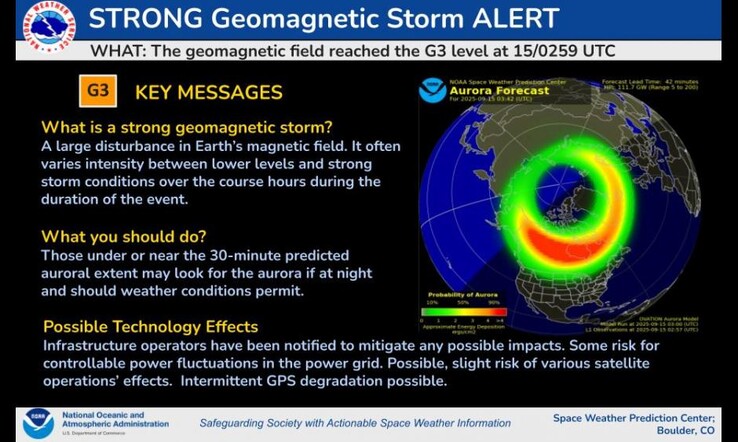Starlink was down on September 15, suffering a global satellite Internet connectivity outage for the second time since the grand service interruption a few weeks back.
More than 50,000 users reported the outage, from Ukraine whose drone army chief Madyar informed that "Starlink is once again down throughout the frontline," to users in Michigan and those roaming with a Starlink Mini dish.
This time around, the reason behind the global Starlink outage may have been out of SpaceX's control. While Starlink didn't specify the reason for the outage in its announcement, it coincided with the National Oceanic and Atmospheric Administration (NOAA) warning for a sizable geomagnetic storm in that same period:
A geomagnetic storm with a K-index of 7 or greater (NOAA G3 or higher) is expected between 02:54 and 09:00 UTC on September 15, 2025, potentially causing power system voltage irregularities, spacecraft surface charging and increased satellite drag, intermittent GPS navigation and HF radio disruptions, and auroras visible as far south as Pennsylvania, Iowa, and Oregon.
The first grand Starlink service disruption came because of a human error. SpaceX was pushing out a capacity upgrade to Starlink's terrestrial network of more than 100 gateways with 150 antennas each in the US alone. Those hubs serve to cover dead spots and lower latency for remote subscribers by distributing the satellite Internet signal over fiber optic cables to enhance ping and ensure more stable connectivity.
The gateway upgrade was meant to prepare the terrestrial signal distribution for the upcoming Starlink gigabit network. SpaceX will start launching its V3 satellites with 10x the throughput capacity in 2026, and will up the peak download speeds to more than 1 Gbps with a Performance dish.
The first big Starlink outage caused by the terrestrial gateway firmware upgrade lasted nearly three hours, but on September 15 Starlink went down only briefly during the geomagnetic storm, with users reporting that they stayed without satellite Internet for an hour and a half at the most.
Source(s)
NOAA, GregHimself (Reddit), Downdetector


















